7 Supposedly Classic Studio Ghibli Movies That Set Terrible Examples for Children
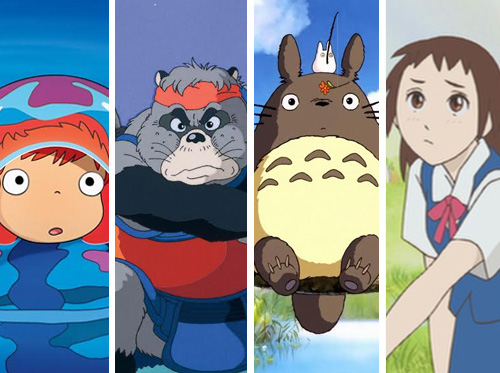 |
Hayao Miyazaki’s (supposedly) final film, The Wind Rises, should be available for you to see very soon. Such an occasion would typically invite yet another fawning retrospective, or ten, on the man’s body of work, and for good reason. There’s no arguing that Miyazaki is a master of his craft, a cinematic storyteller among the best that have ever been. And Ghibli, his animation studio, has revolutionized the animation industry and consistently set the bar for the rest of the world.
However… sometimes…. the good men and women at Studio Ghibli can get a bit TOO MUCH praise and adoration.
Hey, don’t forget where you are, right now. That’s right – the Internet. The playground of the devil’s advocate. So roll your sleeves up for the inconceivable – a list that pays tribute to Miyazaki by enumerating some supposedly classic Ghibli films that are actually really over-rated misfires with AWFUL morals.
1. Ponyo
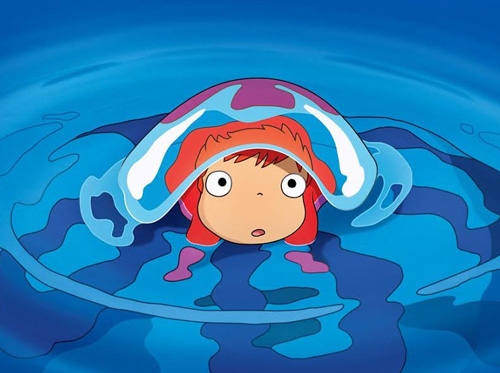 |
This was a marked departure for Miyazaki, both tonally and visually. Ponyo ratchets the child-friendly, storybook look up to such a degree, it becomes positively saccharine. And it’s also the most formless of Miyazaki’s films, with a plot that gets distracted often enough to seem like it’s got a very child-like attention disorder.
Ponyo also suggests that kids make lifelong vows of love and commitment around the age of six. If that weren’t sick and twisted enough, this little boy is signing away his entire romantic career to a girl who’s more fish than woman! What kind of horrible lesson is this for your kids?
Don’t get married before the age of 18, kids. And seriously, don’t get married before the age of eight. If you absolutely MUST, though, I recommend trying to keep it within your own species.
2. Tales From Earthsea
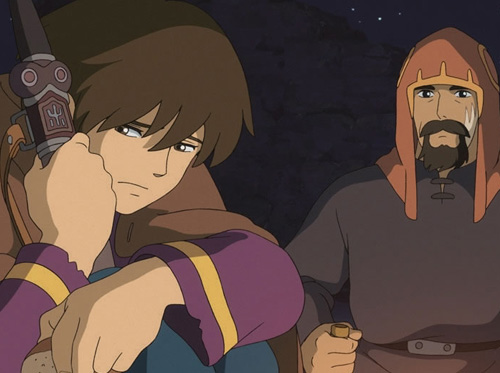 |
The directorial debut of Miyazaki’s son, Goro, is such a mess it almost permanently estranged the elder animator from his heir. This misstep brought Goro’s ability to carry the torch so thoroughly into question that Ghibli actually had to address the issue in the press releases for his sophomore effort, From Up On Poppy Hill. One film, casting that much anxious doubt about the seeming no-brainer of this guy taking his old man’s mantle once the mighty Hayao finally steps down. Even Ursula Le Guin, the author of the books upon which this film is based, has expressed her disappointment with it.
Sheesh. Could you let any more people down?
What’s really upsetting, though, is the inherent arrogance of presuming it’s possible to adapt four full-length fantasy novels into one movie! GORO, ARE YOU MAD!? Haven’t Harry Potter and the Hobbit shown that it takes at least two movies to properly adapt one young adult novel? Earthsea‘s underlying message is of unbridled ambition: thank goodness it was a failure or kids might get the wrong idea about the value of spuriously planning a franchise.
3. Pom Poko
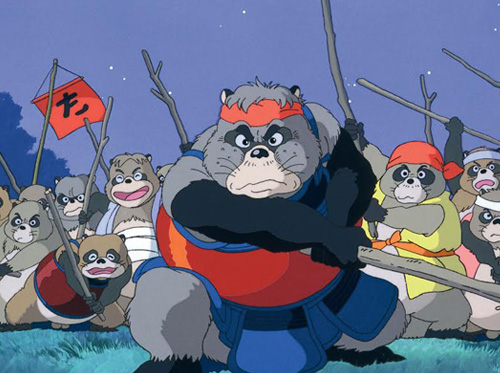 |
This heartwarming romp about the secret lives of Tanuki, Japan’s cuddly “raccoon dogs,” is an epic piece of filmmaking, to be sure. Pom Poko follows the struggle of the Tanuki: trying to stay alive and healthy in an ever-industrializing Japan where urban sprawl constantly threatens their homes. Director Isao Takahata employs several different styles to convey these challenges, crafting a film that’s skillful, nuanced, complex and experimental. It manages to stay mostly upbeat and fun despite the heavy, and sometimes quite sad, subject matter.
But… what I simply cannot abide… is the flagrant and unapologetic use of balls.
Holy shit – every other scene we’re shown features an animal’s sack and gonads. On occasion, these bits are stretched to human size to battle police officers! In one chilling scene, an elder Tanuki “stretches his sack to the limit,” transforming it into an enormous ship which many of the Tanuki ride down the river…to their death. What a horrific, surreal vision. Not since Un Chien Andalou have unsuspecting audiences been exposed to such horrific images of body horror.
4. The Secret World of Arrietty
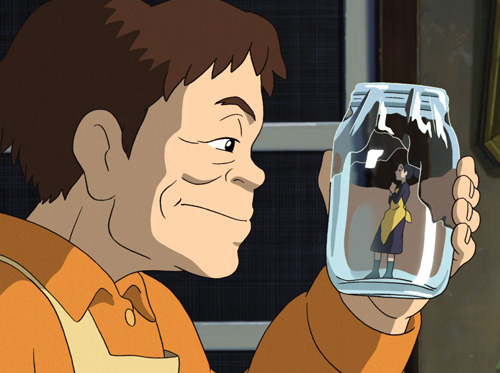 |
Arietty has been lauded by critics and fans alike. Some have even gone so far as to proclaim the director, Hiromasa Yonebayashi, as Miyazaki’s worthy successor! (You hear that, Goro?) The film is beautifully animated in the Ghibli style, with confident animation that quite viscerally conveys the profound difference in size between borrowers and humans.
There also happens to be just as large of a disconnect between the characters and the central conflict. For one, the film is narrated by an older version of the sick boy, effectively erasing any tension about whether he’ll survive the summer (something we are frequently told should be a great concern). The film also switches perspectives so often that it’s hard to get a grasp on who the main character is. Are we meant to identify with Arriety, the movie’s namesake? Or Sho, the sick boy who narrates the film?
While very touching in places, and certainly beautiful to look at, Arietty does suffer a bit from an occasionally dull presentation (lots of characters talking quietly and moping along), and some extremely unlikable characters. What’s really upsetting, though, is the love interest Arietty is presented with. Arietty and Sho can never be together, so she’s forced to settle for a seemingly autistic barbarian named “Spiller” who speaks in grunts and can barely dress himself. She doesn’t care for this boy, she simply has no other option – quite literally!
Never settle, kids! You can do better than Spiller!
5. The Cat Returns
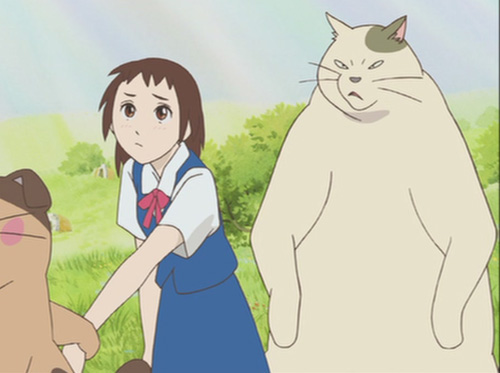 |
This somewhat confounding “sequel” to Whisper of the Heart is one of Ghibli’s biggest head-scratchers. Where Whisper is a quiet, restrained, and beautiful story about a young girl pushing herself to do what she loves, Cat Returns is a wild flight of fancy with exotic worlds in the clouds, cat gestapo and talking animals. The two films couldn’t be any more different. Only the appearance of the Baron, a golden cat in a suit and hat, binds them together. So… why bother?
The Cat Returns is also a massive departure in style for Ghibli – so much so that it just doesn’t feel like them. Instead, it feels like a diversion; a trifle thrown together to hold audiences over until the next Miyazaki joint. It’s not entirely terrible, but it fails to make the connection with the audience that almost every other Ghibli film does.
But what’s truly disgusting is how Cat Returns seems to encourage children to experiment with… *AHEM*… fur. Haru, the movie’s heroine, is introduced to a world of cats where she goes on to dance with the very dashing and debonair Baron, and then start turning into a cat herself! Sure, Haru wants to get home, but its hard not to imagine a certain segment of the audience wanting to stay in the Cat Kingdom and “yiff” with all their favorite characters. If this movie had received the XXX rating it deserved, then maybe we could put it on the shelf with Fritz the Cat and take it off this list. As it is… this is FILTH.
6. Howl’s Moving Castle
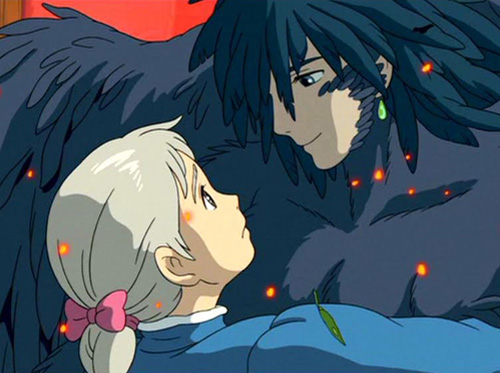 |
This is the Miyazaki film that grabbed the attention of a new generation of anime fans (A.K.A. bandwagon hoppers). Who wouldn’t want to spend some time in Howl’s castle? Visiting whichever town you want… hanging laundry in the mist-shrouded mountains… or spending mornings with a living flame who’s happy to cook you breakfast?
Howl’s Moving Castle prides itself on having characters who are all interesting and multi-dimensional… even the villains. What that actually translates to is Miyazaki being unable to commit to making villains stay villainous. Most of the baddies get transformed into something cute and friendly, and that quickly gets rather tiresome, as it softens the danger to the point of deflating any sense of conflict.
There’s also the deus ex machina ending where almost everything is solved in a matter of seconds by the surprise appearance of a prince in disguise. That’s lazy plotting, no matter how you slice it, and rather uncharacteristic of Miyazaki’s typically more sophisticated approach. Again, the bulk of work seems to have gone into making this a fully realized and livable world; not into making sure anything interesting happens in that world.
More importantly, audiences should not overlook the movie’s troubling suggestion that being old isn’t so bad. This is patently untrue, and very misleading for young viewers! Sophie’s life finally turns around when she becomes an old woman. She finds adventure, friends, fun, even the love of a handsome (if whiny) man-witch-bird-monster. How very unrealistic. The elderly are plagued by poor health, mental problems, and advanced wrinkle-face. This film just ignorantly glosses over all that. Unacceptable.
7. My Neighbor Totoro
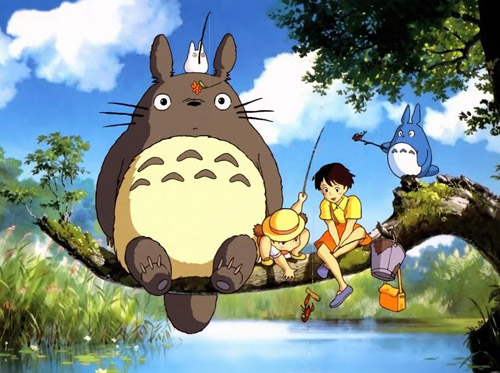 |
Geez, 6 isn’t enough!? Well, fine then…
Some would say this is a perfect film. Totoro is recognized the world over: a household name in Japan who’s still growing in popularity in America, every year. Truly a classic character, and a heartwarming story. Some of Miyazaki’s most personal, human, and affecting work…
But why does Totoro have to be so fat!?
Much like the Cookie Monster, with his chemical dependency on treats, Totoro is a poor role model. He’s enormous. just disgusting. Why couldn’t Mei meet a slender monster in the woods? One who enjoyed vegetables fruits, grains, and protein in sensible amounts?
Imagine that famous scene at the bus stop with a slim, healthy Totoro. His weight alone wouldn’t be enough to shake the rain from the trees and, as a result, everyone would have been a lot more dry (and a lot less likely to die of heart failure before the age of 40).
Obese animals may seem like a cute idea, at first, but they aren’t healthy. In fact, it’s cruel to overfeed your pets. Totoro misses this exceedingly important point, and must be considered a failure as a result.
And that cat bus! You can’t climb inside of animals! That simply isn’t safe – for them or for you!
Previously by Alex Eckman-Lawn:
6 Major Cases of Hollywood Ripping off Anime (and One Huge Counter-Example)
8 J-Rock Bands that Don’t Totally Suck
The 10 Most Diabolical Bosses From Classic Fighting Games
Seven Other Secondary Character Comic-Book Shows That Could Be Made, but Shouldn’t
